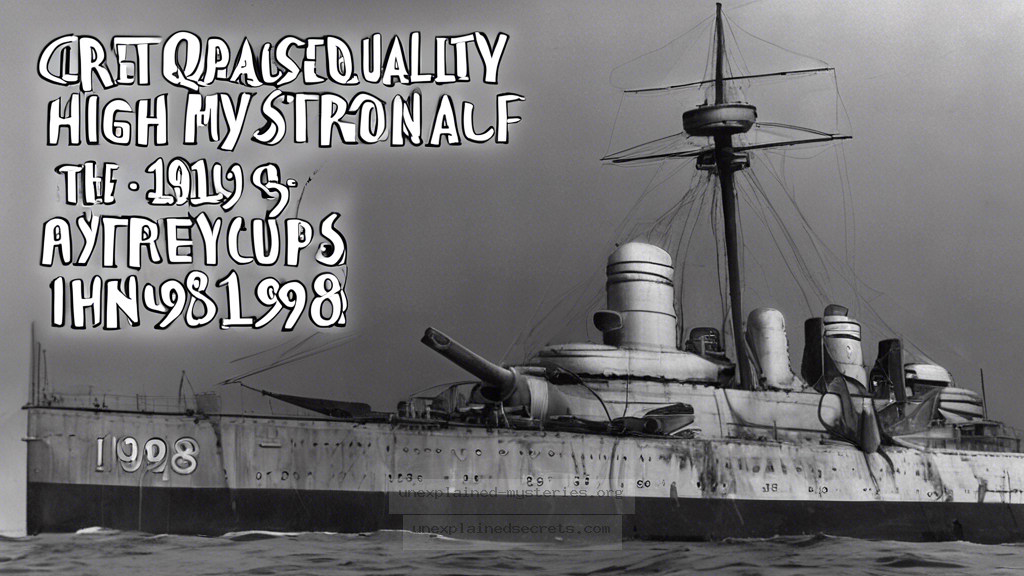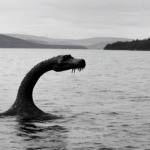What Caused the Mysterious Disappearance of the USS Cyclops in 1918?
What Caused the Mysterious Disappearance of the USS Cyclops in 1918?
The disappearance of the USS Cyclops, a Navy cargo ship, during World War I remains one of the most perplexing maritime mysteries in history. On March 4, 1918, the vessel, which was carrying a load of manganese ore and more than 300 men, vanished without a trace while traveling from Barbados to Baltimore. This event is not only significant due to its mysterious nature but also because it adds to the lore surrounding the Bermuda Triangle, a region infamous for the unexplained disappearances of ships and aircraft. The USS Cyclops case raises crucial questions about the reliability of navigational systems, the power of nature, and the limitations of human understanding in the face of extraordinary circumstances. Let’s dive deeper into this mystery and explore various aspects surrounding it.
Historical Context: The USS Cyclops and Its Voyage
The USS Cyclops was a collier ship commissioned by the United States Navy in 1917. Built in 1910, it was one of the largest ships in the Navy at the time, with a displacement of around 19,000 tons. The ship was tasked with transporting vital resources during World War I, and its voyage in March 1918 was deemed routine. Setting sail from the West Indies, the Cyclops was expected to navigate through the Caribbean Sea, ultimately reaching its destination in Baltimore.
What makes the USS Cyclops’ journey particularly intriguing is the context of World War I. The United States had recently entered the conflict, and the demand for resources like manganese—essential for steel production—was at an all-time high. Consequently, the loss of the Cyclops was not merely a maritime incident; it was a significant blow to the war effort.
The Final Transmission and Mysterious Disappearance
The last confirmed communication from the USS Cyclops was on March 4, 1918, when the crew reported that they were experiencing rough seas and were behind schedule. After this, the ship vanished without a trace. No distress signals were sent, and no wreckage was ever found. The absence of evidence has led to widespread speculation regarding the circumstances of its disappearance. Theories range from navigational errors to supernatural phenomena.
Notable Fact: The USS Cyclops was part of a group of more than 1,000 ships that disappeared in the Bermuda Triangle, a region notorious for unexplained losses.
Core Concepts: The Bermuda Triangle and Its Infamy
The Bermuda Triangle, which encompasses a region between Miami, Bermuda, and Puerto Rico, has long been associated with maritime mysteries, including the disappearance of the USS Cyclops. This area has gained infamy due to a variety of unexplained events, including the loss of aircraft and ships. Scientists and researchers have attempted to demystify this phenomenon through various theories, including magnetic anomalies, methane hydrate eruptions, and human error.
For instance, magnetic anomalies could potentially interfere with navigational instruments, leading ships off course. However, this theory fails to account for the lack of wreckage or distress signals from the Cyclops. Similarly, methane hydrate eruptions, which could create sudden underwater explosions, have been proposed as potential causes for sudden disappearances, but no direct evidence links these events to the Cyclops’ fate.
Practical Implications: Understanding the Investigation
The investigation into the USS Cyclops disappearance was hampered by the limited technology of the time. In 1918, maritime navigation relied heavily on celestial navigation and basic compass readings, both of which could be inaccurate due to environmental conditions. Furthermore, the United States Navy’s investigative protocols were not as advanced as they are today, lacking comprehensive search and rescue operations that might have provided insights into the Cyclops’ fate.
Despite these challenges, several ships were sent to search for the Cyclops. However, the search area was vast, and no concrete evidence was found. This lack of findings only deepened the mystery, prompting a myriad of theories ranging from the plausible to the paranormal.
Alternative Perspectives: Theories and Speculations
Many theories have emerged over the years to explain the disappearance of the USS Cyclops. Some of the most prominent include:
- Weather Conditions: The Caribbean is known for its unpredictable weather. Some suggest that the Cyclops may have encountered a severe storm, leading to capsizing.
- Mechanical Failure: The ship was old and may have suffered from a mechanical failure, causing it to sink without a distress signal.
- Piracy: Given the ship’s cargo and the war context, some theorize it may have been attacked by pirates, although no evidence supports this claim.
- Human Error: Navigational mistakes could have led the ship off course and into dangerous waters.
Each of these theories, while plausible, fails to fully account for the absence of wreckage or any concrete evidence following the ship’s disappearance.
Common Misconceptions: Debunking Myths
The USS Cyclops’ disappearance has been surrounded by numerous myths and misconceptions that can distort understanding of the event. One common myth is that the Cyclops was the only ship to vanish in the Bermuda Triangle. In reality, numerous vessels have been lost in this area, but the Cyclops stands out due to its cargo and the scale of its disappearance.
Another misconception is the idea that the Bermuda Triangle is a “cursed” or supernatural area. Many researchers argue that the incidents occurring in this region can be explained through natural phenomena and human error, rather than invoking the supernatural. This perspective emphasizes the need for scientific inquiry rather than sensationalism.
Warning: Engaging with sensationalized narratives around the Bermuda Triangle can lead to the spread of misinformation and hinder genuine investigation.
Best Practices for Investigation: Learning from the Cyclops Case
The disappearance of the USS Cyclops offers valuable lessons for future maritime investigations. Firstly, comprehensive contingency planning is essential for all vessels, especially those carrying valuable cargo. Modern ships are equipped with advanced tracking technology, enabling real-time monitoring of their status, which can drastically improve search and rescue operations.
Additionally, training for crews in emergency situations is crucial. The more prepared the crew is for unexpected challenges, the better they can respond to crises. Understanding weather patterns and navigation systems can also significantly reduce the likelihood of similar incidents occurring in the future.
Future Developments: Ongoing Research into Maritime Mysteries
As technology advances, so does our ability to investigate maritime mysteries like that of the USS Cyclops. Researchers are now utilizing underwater drones and advanced sonar systems to explore potential wreck sites in the Bermuda Triangle and other areas known for mysterious disappearances. These technologies could help uncover lost vessels and provide insights into the conditions that may have contributed to their losses.
Additionally, interdisciplinary studies that combine oceanography, meteorology, and nautical science are becoming increasingly common. These efforts aim to better understand the complex interplay of factors that contribute to maritime disasters, which may lead to safer navigation practices and improved technology in the future.
Conclusion: The Ongoing Enigma of the USS Cyclops
The disappearance of the USS Cyclops in 1918 remains an enduring mystery that captivates historians, researchers, and enthusiasts alike. While multiple theories exist, the absence of concrete evidence leaves many questions unanswered. The case serves as a reminder of the vastness and unpredictability of the sea, as well as the limitations of human understanding when faced with the unknown. As research continues and technology advances, we may one day unravel the enigma surrounding the USS Cyclops and better understand the factors that contribute to maritime disappearances.
In summary, the fate of the USS Cyclops is a fascinating intersection of history, science, and speculation. This case not only highlights the challenges of maritime navigation in the early 20th century but also serves as a cautionary tale about the sea’s unpredictable nature. 🌊💡
Other Articles
Recent Posts
- What Happened to Flight MH370? The Conspiracy Theories That Still Haunt Us
- What Secrets Lurk Within the Walls of the Infamous Trans-Allegheny Lunatic Asylum?
- What Evidence Supports the Existence of Bigfoot in the Pacific Northwest?
- What Happened to the Indus Valley Civilization? Unraveling the Mysteries of Ancient Urban Life
- Can Telepathy Be Scientifically Proven Through Laboratory Evidence?







